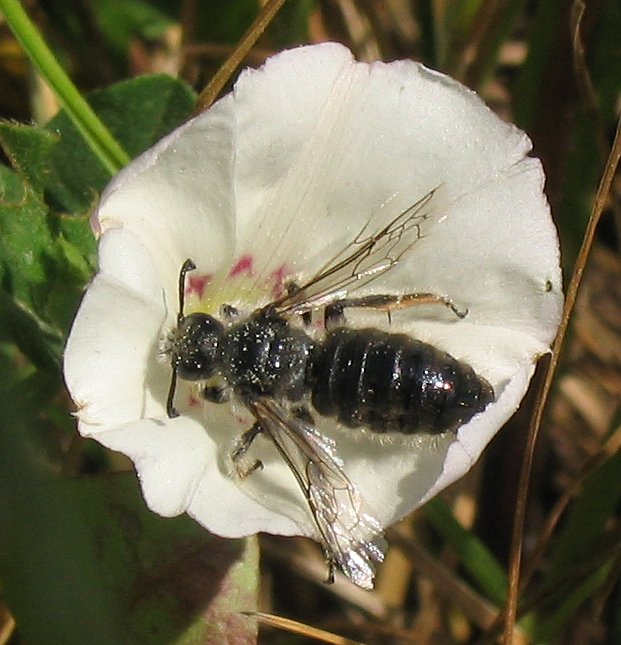|
Eriogonum Argophyllum
''Eriogonum argophyllum'' is a species of wild buckwheat known by the common names Sulphur Hot Springs buckwheat, Silver Lake buckwheat, and Ruby Valley buckwheat. It is endemic to Nevada in the United States, where there is only one known population.''Eriogonum argophyllum''. Center for Plant Conservation.''Eriophyllum argophyllum''. The Nature Conservancy. This rare plant is a mat-forming [...More Info...] [...Related Items...] OR: [Wikipedia] [Google] [Baidu] |
Eriogonum
''Eriogonum'' is a genus of flowering plants in the family Polygonaceae. The genus is found in North America and is known as wild buckwheat. This is a highly species-rich genus, and indications are that active speciation is continuing. It includes some common wildflowers such as the California buckwheat (''Eriogonum fasciculatum''). The genus derived its name from the Greek word ''erion'' meaning 'wool' and ''gonu'' meaning 'knee or joint'. The author of the genus, Michaux, explained the name as describing the first named species of the genus (''E. tomentosum'') as a wooly plant with sharply bent stems (''"planta lanata, geniculata"''). Despite sharing the common name "buckwheat", ''Eriogonum'' is part of a different genus than the cultivated European buckwheat and than other plant species also called wild buckwheat. It came into the news in 2005 when the Mount Diablo buckwheat (''Eriogonum truncatum'', believed to be extinct) was rediscovered. Ecology ''Eriogonum'' spe ... [...More Info...] [...Related Items...] OR: [Wikipedia] [Google] [Baidu] |
Halictidae
Halictidae is the second-largest family of bees (clade Anthophila) with nearly 4,500 species. Halictid species are an extremely diverse group that can vary greatly in appearance. These bees occur all over the world and are found on every continent except Antarctica. Usually dark-colored (frequently brown or black) and often metallic, halictids are found in various sizes, colors and patterns. Several species are all or partly green and a few are red, purple, or blue. A number of them have yellow markings, especially the males, which commonly have yellow faces, a pattern widespread among the various families of bees. The family is one of many with short tongues and is best distinguished by the arcuate (strongly curved) basal vein found on the wing. Females in this family tend to be larger than the males. They are commonly referred to as "sweat bees" (especially the smaller species), as they are often attracted to perspiration. Ecology Most halictids nest in the ground, often in ha ... [...More Info...] [...Related Items...] OR: [Wikipedia] [Google] [Baidu] |
Flora Of The Great Basin
Flora is all the plant life present in a particular region or time, generally the naturally occurring (indigenous) native plants. Sometimes bacteria and fungi are also referred to as flora, as in the terms ''gut flora'' or '' skin flora''. Etymology The word "flora" comes from the Latin name of Flora, the goddess of plants, flowers, and fertility in Roman mythology. The technical term "flora" is then derived from a metonymy of this goddess at the end of the sixteenth century. It was first used in poetry to denote the natural vegetation of an area, but soon also assumed the meaning of a work cataloguing such vegetation. Moreover, "Flora" was used to refer to the flowers of an artificial garden in the seventeenth century. The distinction between vegetation (the general appearance of a community) and flora (the taxonomic composition of a community) was first made by Jules Thurmann (1849). Prior to this, the two terms were used indiscriminately.Thurmann, J. (1849). ''Essai de Phy ... [...More Info...] [...Related Items...] OR: [Wikipedia] [Google] [Baidu] |
Flora Of Nevada
Flora is all the plant life present in a particular region or time, generally the naturally occurring (indigenous) native plants. Sometimes bacteria and fungi are also referred to as flora, as in the terms '' gut flora'' or '' skin flora''. Etymology The word "flora" comes from the Latin name of Flora, the goddess of plants, flowers, and fertility in Roman mythology. The technical term "flora" is then derived from a metonymy of this goddess at the end of the sixteenth century. It was first used in poetry to denote the natural vegetation of an area, but soon also assumed the meaning of a work cataloguing such vegetation. Moreover, "Flora" was used to refer to the flowers of an artificial garden in the seventeenth century. The distinction between vegetation (the general appearance of a community) and flora (the taxonomic composition of a community) was first made by Jules Thurmann (1849). Prior to this, the two terms were used indiscriminately.Thurmann, J. (1849). ''Essai de ... [...More Info...] [...Related Items...] OR: [Wikipedia] [Google] [Baidu] |
Endemic Flora Of The United States
Endemism is the state of a species being found in a single defined geographic location, such as an island, state, nation, country or other defined zone; organisms that are indigenous to a place are not endemic to it if they are also found elsewhere. For example, the Cape sugarbird is found exclusively in southwestern South Africa and is therefore said to be ''endemic'' to that particular part of the world. An endemic species can be also be referred to as an ''endemism'' or in scientific literature as an ''endemite''. For example '' Cytisus aeolicus'' is an endemite of the Italian flora. '' Adzharia renschi'' was once believed to be an endemite of the Caucasus, but it was later discovered to be a non-indigenous species from South America belonging to a different genus. The extreme opposite of an endemic species is one with a cosmopolitan distribution, having a global or widespread range. A rare alternative term for a species that is endemic is "precinctive", which applies to s ... [...More Info...] [...Related Items...] OR: [Wikipedia] [Google] [Baidu] |
Eriogonum
''Eriogonum'' is a genus of flowering plants in the family Polygonaceae. The genus is found in North America and is known as wild buckwheat. This is a highly species-rich genus, and indications are that active speciation is continuing. It includes some common wildflowers such as the California buckwheat (''Eriogonum fasciculatum''). The genus derived its name from the Greek word ''erion'' meaning 'wool' and ''gonu'' meaning 'knee or joint'. The author of the genus, Michaux, explained the name as describing the first named species of the genus (''E. tomentosum'') as a wooly plant with sharply bent stems (''"planta lanata, geniculata"''). Despite sharing the common name "buckwheat", ''Eriogonum'' is part of a different genus than the cultivated European buckwheat and than other plant species also called wild buckwheat. It came into the news in 2005 when the Mount Diablo buckwheat (''Eriogonum truncatum'', believed to be extinct) was rediscovered. Ecology ''Eriogonum'' spe ... [...More Info...] [...Related Items...] OR: [Wikipedia] [Google] [Baidu] |
Off-road Vehicle
An off-road vehicle, sometimes referred to as an overland or adventure vehicle, is considered to be any type of vehicle which is capable of driving on and off paved or gravel surface. It is generally characterized by having large tires with deep, open treads, a flexible suspension, or even caterpillar tracks. Other vehicles that do not travel on public streets or highways are generally termed off-highway vehicles, including tractors, forklifts, cranes, backhoes, bulldozers, and golf carts. Off-road vehicles have an enthusiastic following because of their versatility. Several types of motorsports involve racing off-road vehicles. The most common use of these vehicles is for sightseeing in areas distant from the pavement. The use of higher clearance and higher traction vehicles enables access on trails and forest roads that have rough and low traction surfaces. Off-road vehicles can typically ford through deeper waters (i.e., rivers or floodwaters) than on-road vehicles can. ... [...More Info...] [...Related Items...] OR: [Wikipedia] [Google] [Baidu] |
Livestock
Livestock are the domesticated animals raised in an agricultural setting to provide labor and produce diversified products for consumption such as meat, eggs, milk, fur, leather, and wool. The term is sometimes used to refer solely to animals who are raised for consumption, and sometimes used to refer solely to farmed ruminants, such as cattle, sheep, goats and pigs. Horses are considered livestock in the United States. The USDA classifies pork, veal, beef, and lamb (mutton) as livestock, and all livestock as red meat. Poultry and fish are not included in the category. The breeding, maintenance, slaughter and general subjugation of livestock, called '' animal husbandry'', is a part of modern agriculture and has been practiced in many cultures since humanity's transition to farming from hunter-gatherer lifestyles. Animal husbandry practices have varied widely across cultures and time periods. It continues to play a major economic and cultural role in numerous communities. Lives ... [...More Info...] [...Related Items...] OR: [Wikipedia] [Google] [Baidu] |
Geothermal Energy
Geothermal energy is the thermal energy in the Earth's crust which originates from the formation of the planet and from radioactive decay of materials in currently uncertain but possibly roughly equal proportions. The high temperature and pressure in Earth's interior cause some rock to melt and solid mantle to behave plastically. This results in parts of the mantle convecting upward since it is lighter than the surrounding rock. Temperatures at the core–mantle boundary can reach over 4000 °C (7200 °F). Geothermal heating, using water from hot springs, for example, has been used for bathing since Paleolithic times and for space heating since ancient Roman times. More recently geothermal power, the term used for generation of electricity from geothermal energy, has gained in importance. It is estimated that the earth's geothermal resources are theoretically more than adequate to supply humanity's energy needs, although only a very small fraction is currently being ... [...More Info...] [...Related Items...] OR: [Wikipedia] [Google] [Baidu] |
Tachinidae
The Tachinidae are a large and variable family of true flies within the insect order Diptera, with more than 8,200 known species and many more to be discovered. Over 1,300 species have been described in North America alone. Insects in this family commonly are called tachinid flies or simply tachinids. As far as is known, they all are protelean parasitoids, or occasionally parasites, of arthropods, usually other insects. The family is known from many habitats in all zoogeographical regions and is especially diverse in South America. Life cycle Reproductive strategies vary greatly between Tachinid species, largely, but not always clearly, according to their respective life cycles. This means that they tend to be generalists rather than specialists. Comparatively few are restricted to a single host species, so there is little tendency towards the close co-evolution one finds in the adaptations of many specialist species to their hosts, such as are typical of protelean parasito ... [...More Info...] [...Related Items...] OR: [Wikipedia] [Google] [Baidu] |
Stratiomyidae
The soldier flies (Stratiomyidae, sometimes misspelled as Stratiomyiidae, from Greek - soldier; - fly) are a family of flies (historically placed in the now-obsolete group Orthorrhapha). The family contains over 2,700 species in over 380 extant genera worldwide. Adults are found near larval habitats, which are found in a wide array of locations, mostly in wetlands, damp places in soil, sod, under bark, in animal excrement, and in decaying organic matter. The Stratiomyinae are a different subgroup that tends to have an affinity to aquatic environments. They are diverse in size and shape, though they commonly are partly or wholly metallic green, or somewhat wasplike mimics, marked with black and yellow or green and sometimes metallic. They are often rather inactive flies which typically rest with their wings placed one above the other over the abdomen. Etymology In English, the Stratiomidi are commonly called soldier flies, in German ''Waffenfliegen'' ("armed flies"). In the Ita ... [...More Info...] [...Related Items...] OR: [Wikipedia] [Google] [Baidu] |


.jpg)



